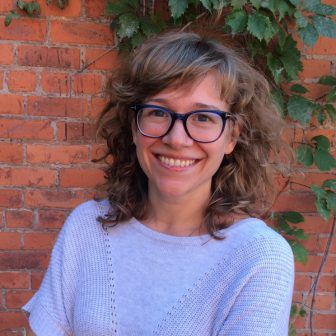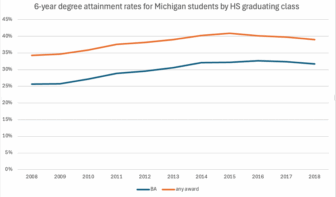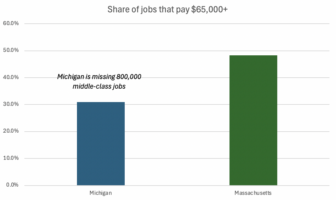![]() I’ve been looking more deeply into one of the “Cs” of the “6 Cs” that we believe, based on Roberta Michnick Golinkoff and Kathy Hirsh-Pasek’s book Becoming Brilliant are the skills that kids need to be successful in the 21st century economy (and which, overwhelmingly, our schools are not designed to build). This is the capacity of confidence.
I’ve been looking more deeply into one of the “Cs” of the “6 Cs” that we believe, based on Roberta Michnick Golinkoff and Kathy Hirsh-Pasek’s book Becoming Brilliant are the skills that kids need to be successful in the 21st century economy (and which, overwhelmingly, our schools are not designed to build). This is the capacity of confidence.
Golinkoff and Hirsh-Pasek define confidence as having two components: willingness to try, and persistence through challenge. It’s especially important in our current and future economy because the future job market is going to offer lots less stability—a lot less room to operate within a comfort zone—and is going to require significantly more learning, growing, and evolving on the job. People with confidence are flexible and adaptable in new environments. They are able to learn more because they are confident that they can learn and grow with enough effort, so they accept challenges and take risks. This is vital in the future economy where we will all be doing much more career “rock-climbing” and where jobs will be appearing and disappearing at faster and faster rates.
Golinkoff and Hirsh-Pasek suggest that humans are capable of moving up four levels in terms of building confidence. As toddlers, we begin with an abundance of confidence, what the authors call the tendency to “barrel on.” You can see this in a toddler who can barely walk, but still believes she can climb the ladder to the top of the slide. “I do it myself,” is the constant refrain in these years, familiar to parents and educators alike. (My younger daughter is still in this phase, and if I were to ballpark it, I’d say I spend 20% of my current day with her waiting for her to zip her coat, or apologizing for offering to help.)
As kids get older, they move to level two, where they begin to compare themselves with others and ask, “Where do I stand?” This involves noticing where they have strengths, but also where another kid might be reading, or drawing, or jumping rope with greater proficiency. During this phase of social comparison, it’s natural (and probably species-preserving) that kids develop a more realistic understanding of their own abilities. But the downside is obvious if you’ve ever heard a kid get frustrated with her crayons because her picture of a turtle just isn’t coming out as well as that of the kid sitting next to her. You can also see fourth-graders who think they “just aren’t good at math,” for instance, being defeated by this belief rather than by the content.
Eventually, we have to support kids as they move to level three, where they take calculated risks. In this phase, kids are willing to challenge themselves and try things in which they aren’t guaranteed success. Without risk of failure, there is no real challenge. So it is in risk-taking that we experience the greatest opportunities for growth. Many adults might live at this level of confidence in most areas of their lives.
Where we’re really trying to get is to enable kids to “dare to fail.”
Some research on developing important non-cognitive skills and traits in young people suggests that we can’t be taught these skills in the same way that we are taught math and science. Instead, we have to go through particular experiences and see these skills modeled. Researchers are still developing a thorough understanding of how you go about intentionally building confidence in kids.
A fascinating framework from the Chicago Consortium on Chicago Schools Research on the Foundations for Young Adult Success suggests that kids need to go through a cycle of action and reflection to grow in a confidently integrated identity. The “action” portion of this cycle involves the opportunity to encounter, tinker, choose, practice, and contribute. Students need meaningful opportunities to wrestle with materials and knowledge, to try things out, to explore. They need some autonomy, and some opportunities to take controlled risks.
A learning community of educators and influencers in education that we facilitate in Detroit came up with this list of strategies and experiences that build confidence in kids.
- Strong relationships with adults who are open and encouraging to them
- By being challenged and overcoming failure
- Trying, and trying, and trying…
- Experiencing incremental successes as a result of trying
- Creating quality work and making meaningful contributions
- Having space to make mistakes and then see progress
- Experiencing developmentally-appropriate challenges and being supported through those challenges
As we work on bringing research to this learning community, we’ve noticed that what we’re learning isn’t a part of the general public conversation—not the confidence-building strategies and experiences we just listed, or their importance in an educational environment. Google “teaching confidence to students” and at best, you get fairly limp ideas about boosting self-esteem by reminding kids what their skills are. Some of the advice I found actually runs counter to what the research suggests truly builds confidence. For instance, non-specific praise of kids may send the message that you aren’t actually noticing them in a meaningful way, and suggests that they are only worthy when someone else notices their value. It suggests that your view is more important than their own, and that their work product is more important than their process.
But more importantly, none of these strategies go far enough in making recommendations about how our schools need to change overall so that kids can have more of the experiences that enable them to build confidence. We believe that a lot can be done with curriculum, pedagogy, and school culture that make a school a confidence generator rather than a confidence killer. We need to be having that conversation.







